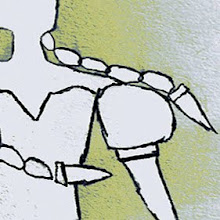Jean-François Millet, Julien Dupré, Alfred Sisley, Camille Pissarro (et d'autres) en ont peint plus d'une – un thème qui a l'air récurrent chez quelques impressionnistes et chez les naturalistes. Il m'a semblé judicieux d'exclure les représentations illustrant La petite gardeuse d'oies (Die Gänsemagd), le conte couché sur papier par les frères Grimm en 1815. J'ai fait un tri parmi la soixantaine de tableaux trouvés en deux après-midis de recherche. Et voici les magnifiques peintures de gardiennes d'oies que je vous présente aujourd'hui.
Rafael Angelot
Agnes L. Atkinson
Teodor Axentowicz (1859-1938)
Émile Barau (1851-1930)
Nikolai Kornilievich Bodarevsky (1850-1921)
William-Adolphe Bouguereau (1825-1905) La gardienne d'oies (1891)
Julien Dupré (1851–1910)
Thérèse Marthe Françoise Dupré (1877-1920)
David Hyde
Eugène Labitte (1858-1937)
John Lavery (1856-1941) Goose Girls (1885)
Jan Mankes (1889-1920) Ganzenliesje (1911)
Jean-François Millet (1814-1875) La gardienne d'oies (1863)
Philip Richard Morris (1836-1902)
Camille Pissarro (1830-1903) La fille aux oies à Montfoucault, Gelée blanche (1875)
Valentine Cameron Prinsep (1838-1904)
Alfred Sisley (1839-1899) La gardeuse d'oies (vers 1885)
Johannes Strieder
Cette drôle d'introduction convie-t-elle à la lecture du conte? À vous de voir:
"Le conte de la Gardeuse d'oies invite à habiter le monde qui nous entoure de notre présence éveillée en la projetant dans les objets. Cela permet d'obtenir leur concours dans les situations critiques. Il faut pour cela apprendre à traduire ses inspirations en des formules vibrantes." Euh…
"Le conte de la Gardeuse d'oies invite à habiter le monde qui nous entoure de notre présence éveillée en la projetant dans les objets. Cela permet d'obtenir leur concours dans les situations critiques. Il faut pour cela apprendre à traduire ses inspirations en des formules vibrantes." Euh…
Paul Hey (1867-1952) The Goose Girl Fairytale Illustration

%2B-%2BOil%2Bpainting%2B-%2BGoose%2Bgirl%2Bwith%2Bgeese.jpg)
%2BThe%2BGoose%2BGirl.jpg)
%2BLa%2Bpetite%2Bgardeuse%2Bd%E2%80%99oies.jpg)
%2BUkrainian%2BGirl%2BTending%2BGeese.jpg)
%2BLa%2Bgardienne%2Bd'oies%2B(1891).jpg)
%2Bgardienne-d-oies%2BDupre%CC%81%2BJulien_In%2Bthe%2BMeadow.jpg)
.jpg)

%2BLa%2Bgardeuse%2Bd'oie.jpg)
%2BGoose%2BGirls%2B(1885).jpg)
%2BGanzenliesje%2B(1911).jpg)
%2BLa%2Bgardienne%2Bd'oies%2B(1863)**.jpg)
**.jpg)
%2BLa%2Bfille%2Baux%2Boies%2Ba%CC%80%2BMontfoucault%2C%2BGele%CC%81e%2BBlanche%2B(1875).jpg)
.jpg)
%2Bpastel%2C%2BLa%2Bgardeuse%2Bd'oies%2B(vers%2B1885)**.jpg)

%2BThe%2BGoose%2BGirl%2BFairytale%2BIllustration.jpg)













%2Bwatching%2Bthe%2Bhorse%2Bherd%2Bhttp--brbl-dl.library.yale.edu-vufind-Record-3522686.jpg)






















